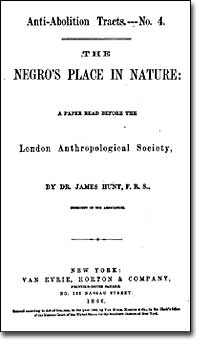Florida History Curriculum
Vice President Kamala Harris declined Florida Governor Ron DeSantis’ offer to “debate the merits of the state’s new curriculum on African American history.”
At an African American Methodist church in Orlando, Florida, Vice President Harris proclaimed, “There were no redeeming qualities of slavery.”
The new Florida school guidelines require teachers to instruct middle school students that “enslaved people developed skills which, in some instances, could be applied to their personal benefit.” Harris called it an “attempt to gaslight us in an attempt to divide and distract our nation with unnecessary debates.”
Slaves Brought New Agriculture to the South
Rather than the slaves “developing beneficial skills,” slaves actually provided new farming methods to the South.
Georgia planters grew rice in swamps, employing methods that South Carolinians had learned from their slaves, including diking rivers to create impoundment ponds and building floodgates to regulate water flow. Yams were brought by slaves from Africa. Eggplant came from Africa to South America, from whence it was brought by Portuguese slave traders to the United States. Peanuts from South America were introduced into Virginia by African cooks who arrived onboard slave ships.<1>
The contributions of slaves to early American agriculture is discounted and ignored, mainly because of the lack of records prepared by the slaveholder. The plantation owner was mainly interested in writing to justify enslavement. However, many plantation owners relied on the agricultural knowledge that Africans brought over from across the Atlantic. Perhaps the best example of this is rice cultivation in South Carolina relied on indigenous West African knowledge of growing Oryza glaberrima. This specific knowledge was invaluable in transforming South Carolina into a rice-producing powerhouse. <2>
Defenders of Slavery
Slavery was the basis of wealth in the South. The value of land and slaves made planters the richest men in America. So like the Florida middle school curriculum, plantation owners tried to justify slavery.
Defenders of slavery:
- Argued the sudden end to the slave economy would have had a profound and killing economic impact in the South where reliance on slave labor was the foundation of their economy.
- Argued if all the slaves were freed, there would be widespread unemployment and chaos. This would lead to uprisings, bloodshed, and anarchy. They pointed to the mob’s “rule of terror” during the French Revolution and argued for the continuation of the status quo, which was providing for affluence and stability for the slaveholding class and for all free people who enjoyed the bounty of the slave society.
- Argued slavery had existed throughout history and was the natural state of mankind. The Greeks had slaves, the Romans had slaves, and the English had slavery until very recently.
- Noted in the Bible, Abraham had slaves. They point to the Ten Commandments, noting that “Thou shalt not covet thy neighbor’s house, … nor his manservant, nor his maidservant.” In the New Testament, Paul returned a runaway slave, Philemon, to his master, and, although slavery was widespread throughout the Roman world, Jesus never spoke out against it.
- Turned to the courts, who had ruled, with the Dred Scott Decision, that all blacks — not just slaves — had no legal standing as persons in our courts — they were property, and the Constitution protected the slave-holders’ rights to their property.
- Argued that the institution was divine and that it brought Christianity to the heathen from across the ocean. Therefore, slavery was a good thing for the enslaved. John C. Calhoun said, “Never before has the black race of Central Africa, from the dawn of history to the present day, attained a condition so civilized and so improved, not only physically, but morally and intellectually.”
- Argued that by comparison with the poor of Europe and the workers in the Northern states, slaves were better cared for. They said that their owners would protect and assist them when they were sick and aged, unlike those who, once fired from their work, were left to fend helplessly for themselves. <3>
To own twenty slaves in 1860 was to be among the wealthiest men in America, easily within the top five percent of southern white families. Almost three million slaves worked on farms and plantations in 1835. Most of the value of agricultural output of the South was produced on large cotton plantations. More than half of all enslaved men and women lived on plantations that had more than 20 enslaved laborers; about a quarter lived on plantations that had more than 50. <4>
Sources:
<1> Brian Williams, “Slavery and Southern Agriculture,” https://www.briangwilliams.us/environmental-history/slavery-and-southern-agriculture.html, retrieved August 16, 2023.
<2> “African-American history of agriculture in the United States,” Wikipedia, https://en.wikipedia.org/wiki/African-American_history_of_agriculture_in_the_United_States, retrieved August 16, 2023.
<3> “The Southern Argument for Slavery,” U.S. History – Independence Hall Association in Philadelphia, https://www.ushistory.org/us/27f.asp, retrieved August 16, 2023.
<4> “Planters, Yeoman and Slaves,” University of Cincinnati, https://www.uc.edu/content/dam/uc/ce/docs/OLLI/Page%20Content/Planters,%20Yeoman%20and%20the%20Rest.pdf, retrieved August 16, 2023.



